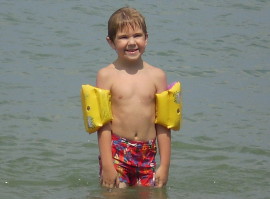Staff

“We urge everyone to take personal responsibility for ensuring water safety for themselves and their children, which includes basic safety practices such as learning to swim at an early age and wearing a lifejacket or a Personal Flotation Device (PFD) while on a vessel or swimming,” said the OPP.
Young children or non-swimmers should always wear a PFD while in the water in case they become in distress. This can make the difference between surviving, or not.
For more safety information visit, www.lifesavingsociety.com.
Open Water Safety Tips:
Never underestimate the power of currents. A boater, swimmer, or wader in open water who underestimates the power of currents can be swept away instantly.
Open water is very different from swimming in a pool – distance is deceiving, and you often have to contend with cold water, waves, currents, drop offs, sandbars, water visibility, undertows, and underwater obstacles, as well as motorcraft.
River currents, especially when concentrated around rocks, bridge pilings, and in hydraulics or whirlpools at the base of dams, have enormous power and can easily trap even strong swimmers.
If you become caught in a river current or fast-moving water, roll onto your back and go downstream feet first to avoid hitting obstacles head first. When you are out of the strongest part of the current, swim straight toward shore.
If your boat has overturned, hang on to the upstream end of the boat.
Always swim with a buddy and check the weather conditions before venturing into the water.
Be aware of currents, water temperature, and depth when swimming in open water.
Wind and waves frequently come up suddenly, posing a major threat for swimmers and boaters far from sheltered waters in lakes and on the ocean. Advance verification and ongoing observation of weather conditions is essential.
Obey signs and signals (such as flags) posted on beaches, which indicate whether the water is safe to enter.
Lifejackets are like seat belts – they only work if you wear them, and wear them properly.
It’s not enough to have a lifejacket on board. It is unrealistic and unsafe to assume that a boater will be able to retrieve and properly secure a flotation device while falling overboard, capsizing, or colliding with another boat or object.
For more open water safety tips, visit www.redcross.ca









